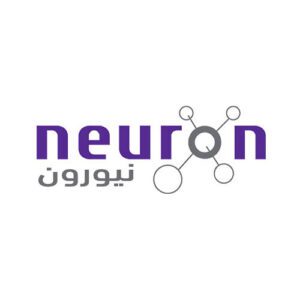Myopathies refer to the various conditions or disorders that affect the skeletal muscle (its cell structure and metabolism) which lead to various muscle malfunctions.
MYOPATHIES SIGNS AND SYMPTOMS
Regardless of what form of myopathy you are diagnosed with, the majority of patients exhibit one or more of the following signs and symptoms:
- Difficulty raising the arm above the head
- Difficulty rising from one’s seat
- Decreased exercise tolerance
- Muscle pain (myalgias)
- Progressive fatigue
- Waddling gait
- Cramps
REQUEST AN APPOINTMENT
A member of our team will reach out to you & quickly get you booked in for an appointment with the most relevant member of our neurology team.
Some women have a greater risk of gestational diabetes. Risk factors for gestational diabetes include the following:
- Overweight and obesity
- A lack of physical activity.
- Previous gestational diabetes or prediabetes.
- Polycystic ovary syndrome.
- Diabetes in an immediate family member.
- Previously delivering a baby weighing more than 9 pounds (4.1 kilograms).
- Race — Women who are Black, Hispanic, American Indian and Asian American have a higher risk of developing gestational diabetes.
COMMON MYOPATHY CAUSES
Myopathies develop when something interferes with the normal structure and/or metabolic processes of muscle cells, resulting in muscular dysfunction. Genetic anomalies, certain medicines, inflammation, infections, hormone deficits or excess, vitamin deficiencies, and electrolyte disorders can all be the underlying causes of myopathies.
There are two main categories of myopathy causes, which include inherited or acquired categories:
INHERITED MYOPATHIES INCLUDE CONDITIONS SUCH AS:
- Duchenne muscular dystrophy
- Becker muscular dystrophy
- Type 1 and 2 myotonic dystrophies
- Facioscapulohumeral dystrophy
- Central core myopathy
- Pompe’s disease
ACQUIRED MYOPATHIES INCLUDE CONDITIONS SUCH AS:
- Polymyositis
- Dermatomyositis
- Inclusion body myositis
- Some medications such as steroids, statins, fibrates and amiodarone
- Viral infections (HIV, influenza virus, Epstein-Barr virus)
- Lyme disease
- Systemic lupus
- Scleroderma
- Sarcoidosis
- Amyloidosis
- Vitamin D deficiency
- Hypothyroidism
MYOPATHY DIAGNOSIS
Diagnosing the causes of myopathy involves obtaining a patient’s comprehensive medical history, which should include, among other things, the use of certain drugs, the presence of specific infections, or other disorders that may aid in the diagnosis. Other significant aspects of the family history, as well as childhood developmental milestones. A physical examination is performed to assess the pattern of muscular weakness and to look for other useful signs to guide diagnosis. In addition, your doctor will usually suggest various tests to confirm the diagnosis, such as:
BLOOD TESTS:
These are employed to measure some products in your blood that might indicate the presence of muscle damage, including elevations in creatine phosphokinase (CPK), aldolase, lactate dehydrogenase (LDH) and lactate. Blood levels of pertinent vitamins and hormones may also be measured.
NERVE CONDUCTION STUDY:
This is often carried out before needle EMG in order to exclude neuropathies that may present similar symptoms.
ELECTROMYOGRAPHY (EMG):
This procedure involves the insertion of a transdermal needle electrode into certain muscles to assess electrical activity. This often verifies the presence of muscle dysfunction and aids in distinguishing it from neuropathy. It may also help diagnose conditions such as myotonic dystrophy.
MUSCLE BIOPSY:
Tissue analysis may aid in determining the specific type of muscle condition, particularly in patients with certain inherited muscle illnesses.
MYOPATHIES TREATMENT
Treating myopathies depends on the underlying cause of this condition and whether it’s inherited or acquired.
INHERITED MYOPATHIES
Most hereditary myopathies have no cure, and treatment is largely aimed at maintaining overall quality of life. Physical therapy, nutrition, and genetic counselling may be recommended. The progression of some inherited myopathies, such as Duchenne muscular dystrophy, has been found to be treatable through corticosteroids. Some uncommon conditions, such as Pompe disease, now have available treatments that can halt the progress of disease and prolong life lived without disability.
ACQUIRED MYOPATHIES
Identifying and correcting the underlying cause is the best treatment option for acquired myopathies. This involves treating underlying infections, eliminating certain medications, and improving the patient’s general conditions. Immune modulators may be used to treat inflammatory myopathies such as polymyositis. Physical treatment may also be required to avoid contractures and impairments.
MEET OUR TEAM NEUROLOGY & NEUROSURGERY
- All
- Neurology
- Neurosurgery
PARTNERING WITH LEADING
MEDICAL INSURANCE PROVIDERS
We work with leading medical insurance providers in the country, if you have any questions or queries just give us a call on 8008254268.














